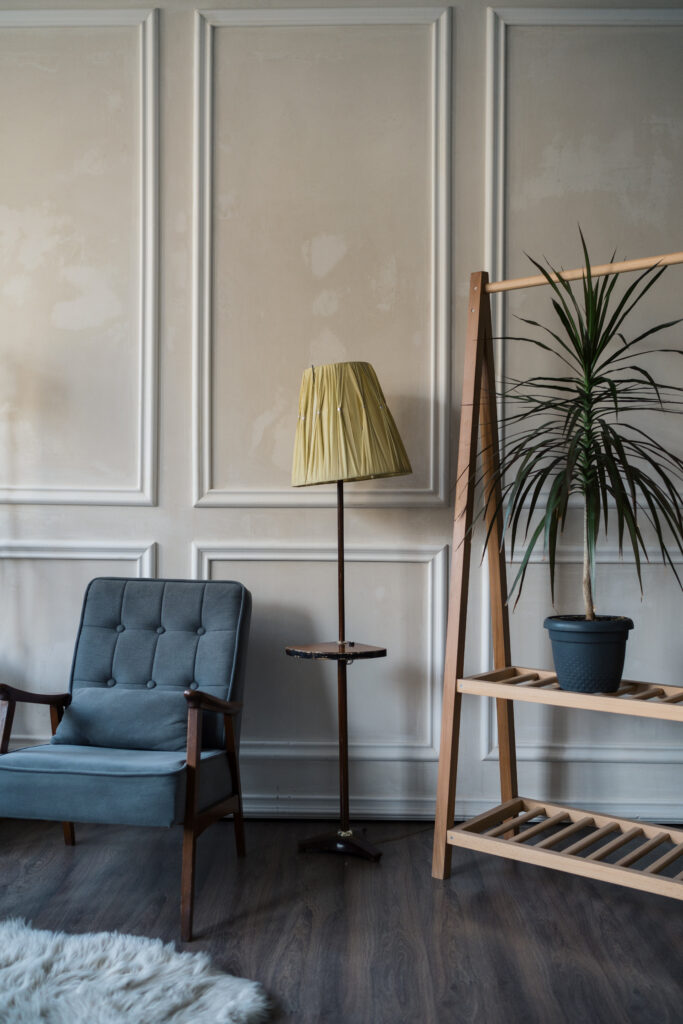Creating a safe and kid-friendly smart living room is crucial in today’s technologically advanced world. With the increasing popularity of smart devices and home automation, it is important to ensure that children are not only entertained by these gadgets but are also protected from potential hazards. This article will guide you on how to design a smart living room environment that not only incorporates the latest technology but also prioritizes the safety and well-being of your little ones.

Choose Safe and Durable Furniture
When selecting furniture for your kid-friendly and safe smart living room environment, there are a few key considerations to keep in mind. First and foremost, it’s important to avoid sharp edges and corners. Look for furniture with rounded edges or consider using edge protectors to ensure the safety of your children. Additionally, choosing furniture made from non-toxic materials is crucial. This helps to minimize the risk of exposure to harmful chemicals. Finally, it’s essential to ensure the stability of the furniture. Look for pieces that are sturdy and well-built to prevent any accidents or injuries.
Secure Electronic Devices
In today’s digital age, electronic devices are a common fixture in many households. However, it’s important to take the necessary precautions to keep these devices safe and secure, especially in a kid-friendly environment. Be sure to mount televisions and other devices securely to prevent them from falling and potentially causing harm. It’s also important to cover electrical outlets to prevent accidental shocks. Using cord organizers can help keep cords out of reach and minimize the risk of tripping. Lastly, consider locking cabinets and drawers that hold electronic devices to prevent unauthorized access.

Create a Sensory-friendly Environment
For children who may be sensitive to certain stimuli, creating a sensory-friendly environment in your living room can make a world of difference. One consideration is lighting options. Use adjustable lighting fixtures or lamps to provide different levels of brightness, which allows you to customize the lighting to suit your child’s needs. Additionally, incorporating sound-absorbing materials such as rugs, curtains, or acoustic panels can help reduce noise levels and create a more calming atmosphere. Providing cozy seating options, such as bean bags or soft cushions, can also make the space more comfortable for sensory-sensitive children. Finally, incorporating sensory stimulation toys or items, such as tactile objects or fidget toys, can help engage your child’s senses in a positive way.
Eliminate Trip and Fall Hazards
To create a safe living room environment for your children, it’s important to eliminate trip and fall hazards. One of the simplest ways to achieve this is by securing rugs and carpets with non-slip pads. This helps to prevent them from sliding and causing accidents. Keeping the floor space clutter-free is also crucial. Toys, books, and other items should be properly stored away to minimize the risk of tripping. Additionally, ensure that cables and cords are out of reach or properly hidden to prevent both tripping hazards and the risk of electrical accidents. Using safety gates or barriers is another effective way to create designated safe areas in your living room.

Implement Childproofing Measures
Childproofing your living room is an essential step in ensuring the safety of your children. Installing safety latches for cabinets and drawers is an effective way to prevent little hands from accessing potentially dangerous items. Door stoppers or guards can also be used to prevent doors from slamming shut and potentially injuring your child’s fingers. Adding corner guards to furniture is another important childproofing measure, as it helps to protect your children from sharp corners. Additionally, installing window restrictors or guards can prevent accidents involving windows.
Choose Kid-friendly Decor and Accessories
When designing a kid-friendly living room, it’s important to choose decor and accessories that are both visually appealing and safe for children. Opt for non-breakable and child-safe decorations, such as wall hangings made of fabric or soft materials instead of fragile items that can easily break. Avoid accessories with small or detachable parts, as these can pose a choking hazard. If you want to add visual interest to your walls, consider using removable wall decals instead of paintings or framed artwork. Finally, provide storage solutions for toys and books to keep the living room organized and clutter-free.

Establish Smart Home Security
In a smart living room environment, it’s essential to prioritize security measures to protect your children and your home. One important step is to secure smart devices with strong passwords. This helps to prevent unauthorized access and protects your privacy. Connecting surveillance cameras for monitoring allows you to keep an eye on your children from another room or even when you’re away from home. Utilizing smart lock systems for entry control adds an extra layer of security, as you can remotely lock or unlock doors as needed. Configuring parental controls on digital platforms allows you to monitor and restrict your child’s online activities, ensuring a safe and age-appropriate digital experience.
Design an Interactive Learning Space
Creating an interactive learning space in your living room can foster a love for education and help your children thrive academically. Incorporate educational games and apps that are both engaging and educational. Set up a designated study area with a desk or table and comfortable seating to create a focused learning environment. Display educational posters or charts on the walls to provide visual reinforcement of key concepts. Finally, be sure to include space for creative activities, such as a craft area or an easel, where your children can explore their artistic talents and imagination.

Ensure Adequate Supervision
While creating a kid-friendly and safe living room environment is important, adequate supervision is equally crucial. Establish clear boundaries and rules with your children to ensure they understand what behavior is expected of them in the living room. Designate comfortable seating areas for supervision, where you can keep a close eye on your children while allowing them to explore and play. Using baby monitors or intercom systems can help you monitor your children’s activities even when you’re not in the same room. Additionally, scheduling regular check-ins and interactions with your children ensures that they feel supported and watched over.
Encourage Physical Activity
Physical activity is an important aspect of a child’s development and overall well-being. In your kid-friendly living room, it’s important to encourage physical activity in a safe and controlled environment. Allocate space for indoor physical activities, such as a designated play area or a corner for yoga or stretching exercises. Provide age-appropriate exercise equipment, such as a mini trampoline or foam blocks for building obstacle courses. Install safety gates or mats in play areas to prevent injuries from falls. Lastly, implement screen time limitations to encourage your children to engage in physical activities rather than spending excessive time in front of screens.
Creating a kid-friendly and safe smart living room environment requires careful consideration of various factors, including furniture, electronic devices, decor, and supervision. By following these guidelines and implementing the suggested measures, you can design a space that promotes your children’s safety, learning, and overall happiness. Remember, a well-designed living room environment not only provides a safe haven for your children but also contributes to their growth and development in a positive way.
